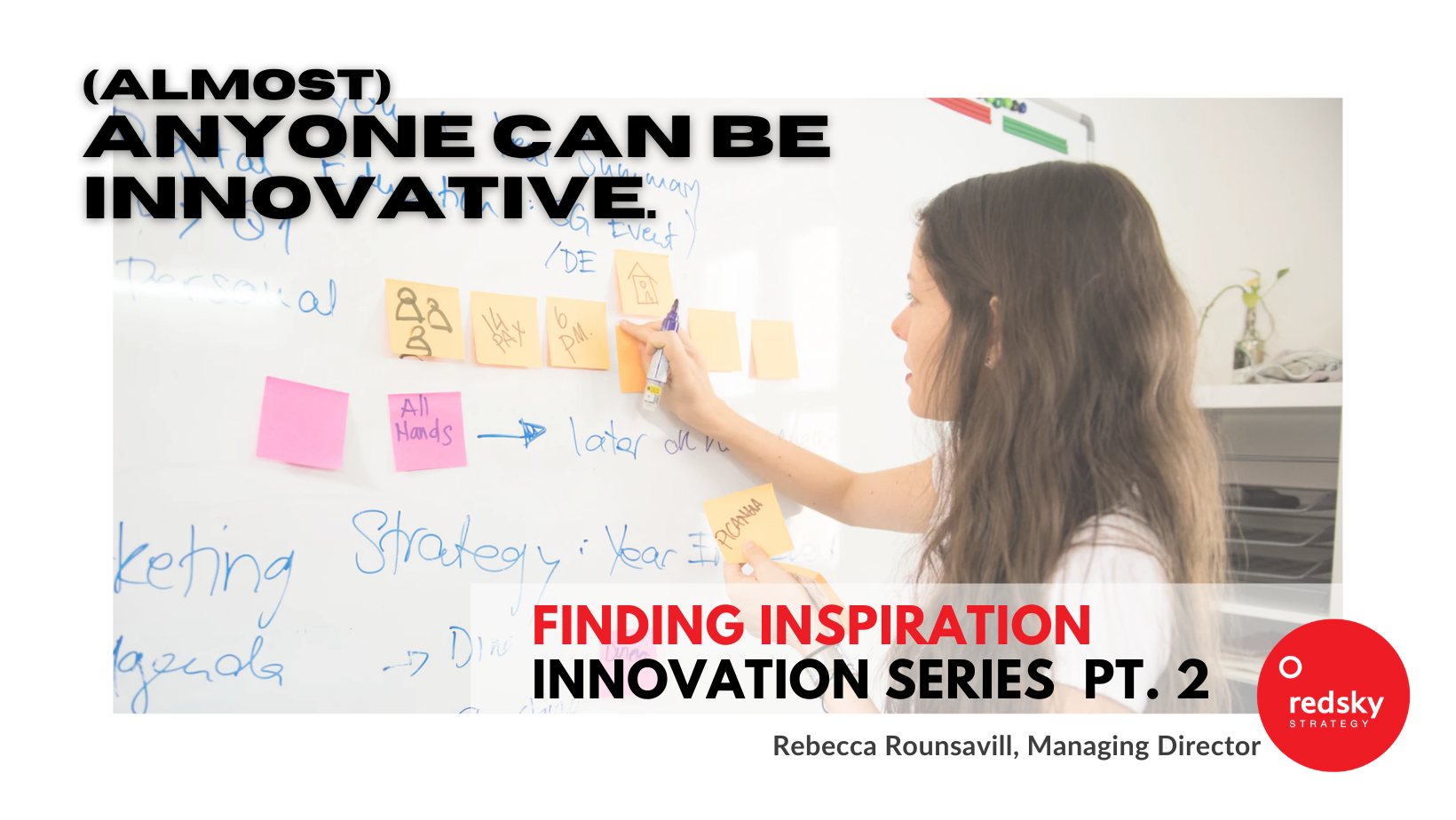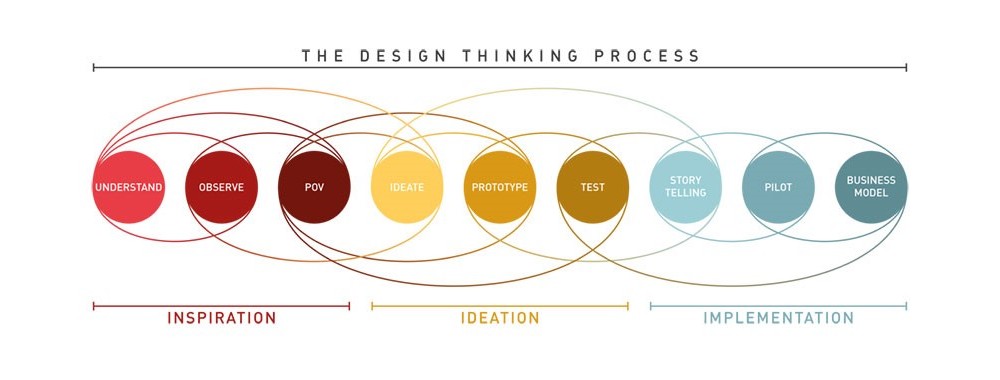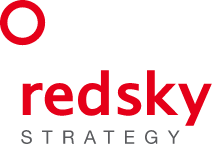News
Finding Inspiration: Innovation Series Part 2

By Rebecca Rounsavill, Managing Director
Myth: Innovation is only for the super creative. Not true! It is just as much about effort. In fact, almost anyone can be innovative. A few months ago, we posed the question: Do you really know what you want? in Part One of our Innovation series. Today we’ll be discussing Part Two in this five-part series: Finding Inspiration.
As Edison has famously quipped, Genius is 99% perspiration and 1% inspiration. No big idea has ever come out of a single 3-hour brainstorming session. Nope. Never. There is no brainstorming exercise good enough to make up for the lack of hard work.
The good news is that the work is fun – at least for the curious. The job is to expand your thinking in order for the inspiration to strike. You see, an idea is not a lightning bolt, shot out of thin air, rather it is the confluence of multiple observations, insights and learnings. Finding inspiration is a foundational (and crucial) step on the Discovery Journey.
When seeking new ideas, we create a pivotal launch pad through the lens of HumanSight: enabling teams to walk in the shoes of their target, explore trends, and do other activities to think differently about a problem or opportunity. The Discovery Journey may encompass talking with or observing people, creating new experiences or even just looking at past research through a different lens. People are a key to forming ideas, and weighing the feasibility of their success. Here’s why:
Everyone Has Needs – Try to Understand and Solve Them
RedSky Strategy focuses on people for two reasons. One is to develop greater empathy for our target consumer so that we can better understand his/her needs, and the other is to talk to people who are not our target at all but who might have an interesting perspective on your problem.

Image from the Interactive Design Foundation
Gathering empathy is a key step in the Stanford Design Thinking Process. As they put it, “Observing what people do and how they interact with their environment gives you clues about what they think and feel. It also helps you learn about what they need.” This can be especially helpful if you are designing new packaging. Additionally, talking to people who are not your target can also help you view the problem from a different lens. This often means talking to “extremes” – people who have an intense relationship with your category.
Imagine you are trying to create a new product for energy – you could talk to rock climbers about intense energy needs, acupuncturists to discuss energy points or even high energy people who don’t have issues with energy to see what they are doing right. After finding inspiration, the key is comprehensive and inclusive market research.

Put Yourself in Your Target’s Shoes
Creating immersive experiences for teams can add a personal, emotional element that can’t be achieved through observations or discussions. It can be especially helpful to try to walk in the shoes of your target, and create additional empathy for their experience. In fact, you would be surprised by the number of team members who have never even tried their own products or competitive products.
One team we worked with were frustrated that consumers never took the full dose of their nutritional product. After trying the product at multiple doses, the problem became clear. Interestingly, it wasn’t a price issue – the product just wasn’t palatable using the recommended dose. In addition, many trends are relevant across multiple categories. Experiencing the feeling of a good work-out may be just as important as eating a healthy meal when trying to access the emotions of someone who proactively manages their health.

Analyze Existing Data for Greater Understanding
Lastly, we always recommend new ways to synthesize existing data to get a better understanding of the issue. This includes looking at customer reviews online and listening to customer service calls. There is so much that can be learned without ever spending a dime in new research.
When introduced to new products, it is helpful to imagine where the idea originated. It’s clear that the highly successful hard seltzers like White Claw and Truly originated from the success of LaCroix. But what about Bang Energy drinks (which adds performance enhancing ingredients like creatine to their caffeinated beverages)? Perhaps, the team observed a bunch of teen-age males to see what they were consuming. Maybe the data showed that some of the energy drink usage was to enhance performance. It’s also possible that they talked to high performance athletes, and realized that many were consuming both caffeine and creatine. One thing is clear – the idea did not come out of thin air.
Finding Inspiration & Launching Into Growth
The best way to create new ideas is not to sit in an empty room and think. Rather, it is to explore multiple areas relevant to your opportunity space. With the right inspiration, every single human has the capacity to create new ideas. You don’t need lightning, you just need a few sparks.
If your brand is looking for a launchpad to project you into pivotal growth, RedSky Strategy can help you lean into innovation, look deeper at your target, and leverage market research in a relevant and resonant way.
